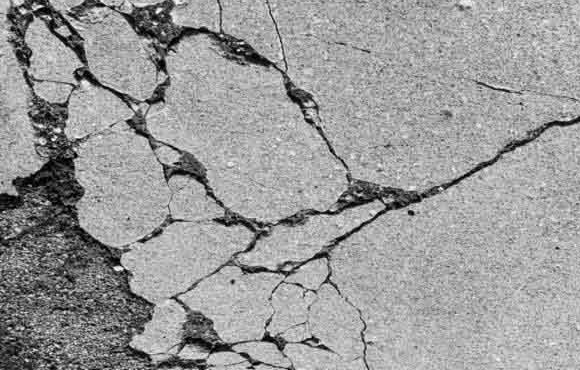Introduction to freezing and thawing
Concrete and brick elements are among the building materials that are frequently damaged by the freeze-thaw cycles in cold regions. Water enters the pores / voids in a stiff, porous material (such as concrete, mortar and brick), freezes, and then expands, causing freeze-thaw damage.
When water freezes, it expands its volume by 9% (volume of ice is 9% higher than the volume of liquid water). This exerts pressure on the material from the inside. When the pressure is greater than the material’s tensile strength, fractures will form. The voids become larger throughout this process, allowing for the buildup of more water during the subsequent thaw, which causes more cracking during the subsequent freeze. Over the course of further freeze-thaw cycles, significant damage may develop.
How Freeze-Thaw Damage look like?
Excess water on concrete surfaces or inside of it might cause freeze-thaw damage. Internal cracking and surface spalling are the two forms of damage.

Surface spalling
is a result of surfaces becoming repeatedly wet over long periods of time due to the buildup of water or snow on both vertical and horizontal surfaces. The outer layer of the material breaks upon freezing to the depth of water penetration and comes off. Spalling of the concrete surface exposes the underlying aggregate, and further spalling might reveal the reinforcing bars, causing further degradation. The exterior layer of concrete will flake off as a result of concrete surface spalling, revealing the deeper layers, which are usually softer, more porous, and more vulnerable to additional freeze-thaw damage.
Internal cracking
happens when water is trapped in interior cracks and fissures and is exposed to freezing. As opposed to surface spalling, inner cracking may not be seen upon visual inspection. Further freeze-thaw cycles might cause the damage to spread to the surface.
How to prevent Freeze-Thaw Damage
Surface spalling and interior cracking are both progressive concerns that are better managed proactively rather than reactively since the damage will worsen if not fixed. There are several methods for avoiding damage, such as the following:
Control rain, ice, and snow penetration
Controlling environmental water is one strategy for avoiding freezing damage. Water penetration in assemblies is prevented by well crafted parapets, copings, roof edges, and other crucial connection points. Water is kept from soaking into the surfaces of the walls by overhangs, drip edges, and other elements.
Control groundwater
Reduce capillary action caused by wet ground. The earth should slope away from the structure and be well-drained. Wall assemblies should have flashing or other techniques to prevent water from being sucked up into them.
Use appropriately designed concrete
Concrete should be made with qualities that will reduce damage from freeze-thaw cycles. Low permeability results from low water to cement ratio, which in turn lowers internal and surface water absorption. The tensile strength of high strength concrete (6,000 psi or more) is improved, and it can tolerate increased internal pressures brought on by freezing. Micro-bubbles in air-entrained concrete (4 percent or more of the volume of the concrete) allow the concrete to expand while having a lower chance of cracking. Comparatively to larger aggregate, smaller aggregate is less likely to include internal voids.
Summary
The freeze-thaw cycle is a concern in most climates and should be addressed during design. With proper detailing and specification freeze-thaw damage to assemblies can be reduced or eliminated.
Read Also:
